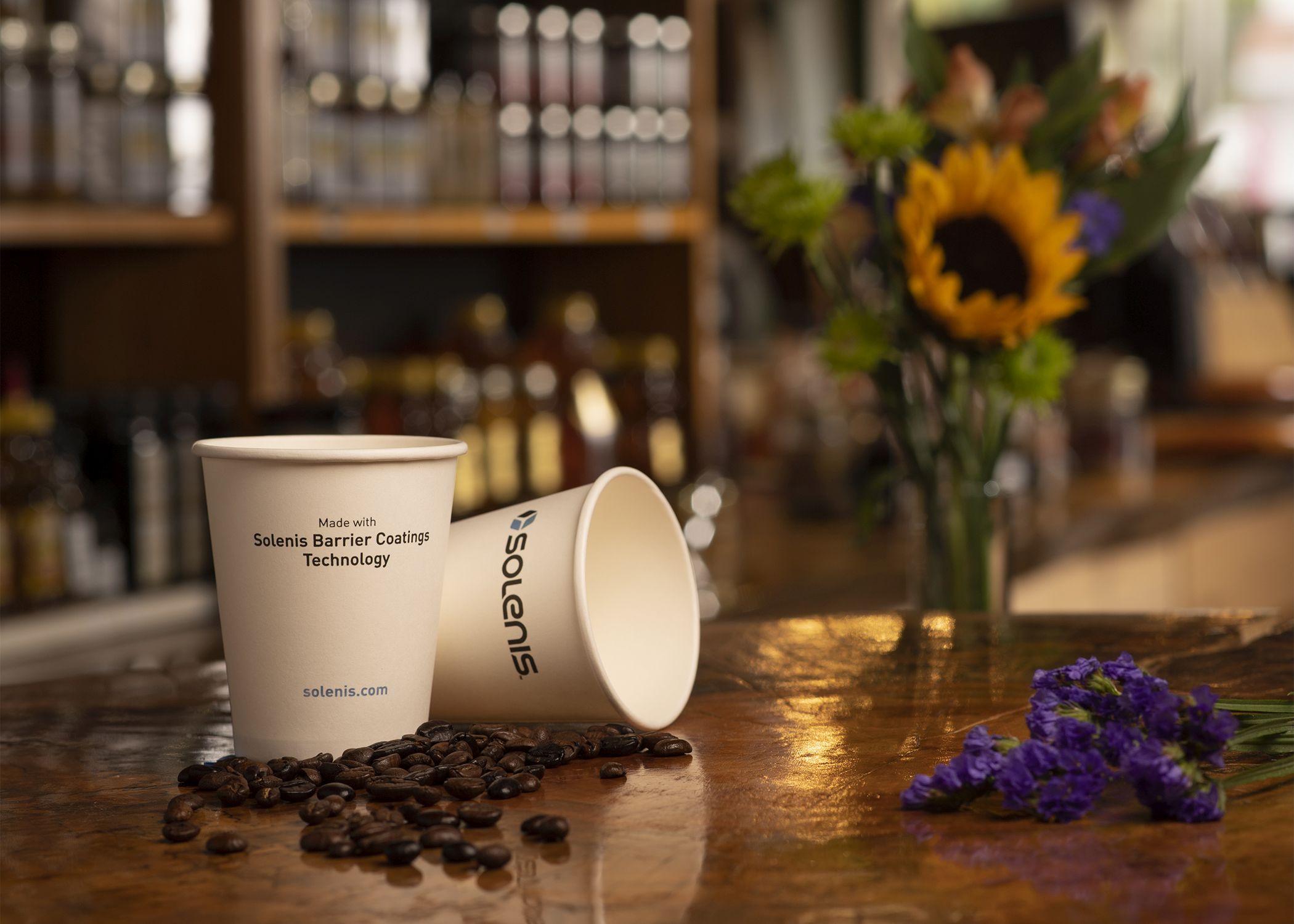June 26, 2019
FOR IMMEDIATE RELEASE

Solenis Executive Viewpoint: Packaging Materials
Paper Formulation Technology is a Key Driver for Sustainable Packaging
Ricardo De Genova
Vice President, Strategic Marketing and R&D — Paper
Solenis (Wilmington, DE / www.Solenis.com)
As interest groups raise awareness about plastic waste, governments around the world are starting to ban various types of plastics, especially single-use packaging items. We all know the reasons behind this push: Plastic waste is filling our landfills and waterways and breaks down very slowly in the environment.
Ultimately, the impact will not be confined to items such as grocery bags and straws. Analysts expect the movement to extend to plastic bottles, disposable cups, food-service packaging and ready-meal containers. In fact, several major consumer brands, as well as a significant number of European retailers, have moved to reduce or eliminate their use of plastics in packaging. And more will certainly follow.
Renewed Focus on Paper Materials
In this new paradigm, the pulp and paper industry has an opportunity to rise to the challenge of providing more environmentally friendly fiber-based solutions to replace all those plastic straws, bottles, disposable cups and food containers. But before that happens, it's important to address the foundational aspects of packaging production that will enable these products to be replaced with environmentally friendly alternatives, especially in food applications.
The Enabling Technologies
Almost anything, of course, is technically recyclable at a cost. But what makes a paper package most valuable in this new world is whether a material is repulpable. To this end, the goal is to replace paraffin wax or polyethylene (PE), fluorocarbon for grease barriers and the use of PE in cups and food-service applications. To achieve this goal, special formulations are required for paper packaging that act as a barrier to water, hot/cold liquids, greases and oils, moisture and water vapor-to name just a few. Suitable replacement formulations include barrier biowaxes used for different applications. Individual barrier products can also form a system consisting of one to three different coatings, each having different functions, with the final system design depending on the end producer's requirements.
As the packaging industry moves toward fiber-based material for more sustainable solutions, there are some key issues to consider when it comes to paper material formulation.
Is it repulpable? Repulpability enables creation of a segregation system for post-consumer cups that can be repulped, where the fiber is recovered and reused to produce paper and paperboard products, perhaps even back into cups. The value of the fiber in these cups is very high, enough to make it economically feasible to develop the infrastructure needed to collect, segregate and recover these containers after use. Therefore, the barrier formulation should enable repulpability. This is not typically economically viable with PE-coated cups.
Is it compostable? The long-term objective, of course, is to recover the fiber. In the short term, if the material can be redirected to composting facilities — as opposed to landfills — this helps with consumer messaging and is a step forward for brand owners and the environment as well. As a result, fiber material with compostable barrier formulations have a significant advantage over PE products, which cannot be composted. However, this is still secondary to repulpability.
How is the formulation produced? This is a key point on sustainable sourcing, where many consumer brand owners have aspirational goals of using more than 50 percent sustainably sourced raw materials. Manufacturers of paper barrier coating formulations are seeking to minimize fossil fuel derived components and maximize renewably sourced raw materials. Some barrier solutions for example are 100% non-fossil based.
Is the barrier formulation functional? Barrier formulations must meet the functional requirements of the material being replaced. These requirements include resistance to oil, grease and water in applications like hamburger wrap, and resistance to staining for on-the-go coffee cups. Many paper-based packages are designed for consumer appeal and branding, and involve printing, sealing, gluing, flexibility and elasticity. As a result, paper barrier formulations must still allow the same packaging functionality while meeting sustainability goals.
Does the formulation facilitate manufacturing? One of the biggest advantages with some barrier coating formulations is that you can apply them using paper machine coaters, off-machine coaters or even flexo/reverse gravure printing presses. With some barrier coatings you can even convert the coated board into cups on existing cup-making machines designed to work with PE. As a result, very little capital expenditure is required to utilize these barrier systems; paper manufacturers can run them now if they have a coater.
The good news is that awareness of fiber as a functional packaging alternative continues to gain ground. For example, in the NextGen Cup Challenge, a global consortium that includes major food industry players recently issued a challenge to identify and commercialize existing and future solutions for the single-use, hot and cold fiber cup system. Solutions could include cup lids, sleeves and straws, as well as reusable and alternative delivery systems. Nearly 500 entrepreneurs, inventors and scientists from more than 50 countries, including a team from Solenis, responded enthusiastically with ideas and potential solutions. Solenis was recognized as one of 12 final winners and work to scale its proposed solution is underway.
Working together, the paper industry can make a difference in reducing plastic waste in the environment and supporting the circular economy in 2019 and beyond.
Ricardo De Genova is vice president, Strategic Marketing and R&D for Paper at Solenis, a leading global producer of specialty chemicals used in pulp and paper production, among other industries.